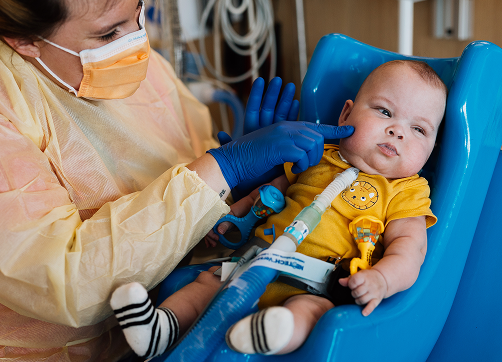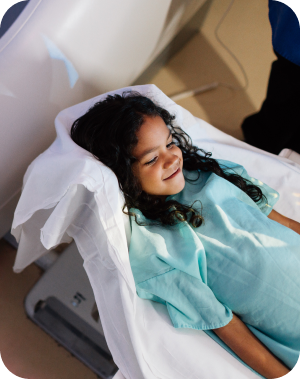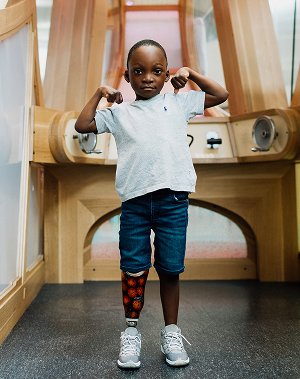DiGeorge syndrome (22q11.2 deletion syndrome)


about condition
22q11.2 deletion syndrome, also known commonly as DiGeorge syndrome, is a condition that varies greatly in severity among affected individuals (including family members). This condition is caused by a deletion in chromosome 22 near the middle of the chromosome in an area known as q11.2. As a result, the deletion causes poor development of several body systems.
characteristics and symptoms may range from some to many of these:
- Skullbone malformations
- Long face
- Wide-set eyes, hooded eyes, lens cloudiness, abnormal size of one or both eyeballs and other eye issues
- Enlarged nose tip (bulbous)
- Small, low-set ears / hearing loss / ear infections
- Possible short or flattened grove in the upper lip
- Cleft palate/ feeding, dental and speech issues
- Heart malformations
- Hypoparathyroidism (endocrine disorders)
- Thrombocytopenia (low blood platelet count)
- Scoliosis (curvature of the spine)
- Kidney malformations
- Developmental delays / Intellectual disability
- Muscle issues
- Autoimmune disorders / Recurrent infections
- Autism, Attention Deficit, and/or personality disorders
how do I know if my child will be born with 22q11.2 deletion syndrome?
If you are an affected individual with this syndrome, you have a fifty percent chance of having a child with the same condition. Testing such as ultrasonography and fetal echocardiography may identify risks; however, this is not considered diagnostic. If a conotruncal cardiac defect is determined, then deletion testing would be advised. After birth, if 22q11.2 deletion syndrome is suspected, tests such as CT, MRI, heart ultrasound and other testing may be ordered. Genetic testing may be recommended for other family members.


how do you treat 22q11.2 deletion syndrome?
Treatment is focused on the management of the symptoms to improve quality of life. This may involve medications for infections, supplements and diet management, cleft palate and heart surgeries. Various therapies such as physical, occupational, speech, stem cell and hormone therapies may be needed.
faqs
It is believed to occur in 1 out of every 4000 individuals. However, due to the variable features of this syndrome, it is often underdiagnosed and researchers estimate it occurs more frequently.
22q11.2 syndrome is caused by a genetic mutation change, more commonly now known as a genetic variant. Affected individuals have a fifty percent chance of passing the syndrome on to their offspring.
One to two percent of children born with this syndrome have a life expectancy of two to three years; however, most individuals reach adulthood and can live a life span into the fifties. Early treatment should be considered for the most severe issues with this condition to prolong life expectancy.
This syndrome is autosomal dominant; these are the genes known to be involved:
- TBX1, ARVCF, GP1BB, UFD1L, HIRA, COMT, JMJD1C, RREB1, SEC24C
Other names include Velocardiofacial syndrome; VCFS; DiGeorge syndrome; Shprintzen syndrome; Sedlackova syndrome; CATCH22; Autosomal dominant Opitz G/BBB syndrome; Conotruncal anomaly face syndrome; Cayler cardiofacial syndrome.
related blogs
here when you need us
Whether you’re looking for the right provider, ready to make an appointment, or need care right now—we’re here to help you take the next step with confidence.

